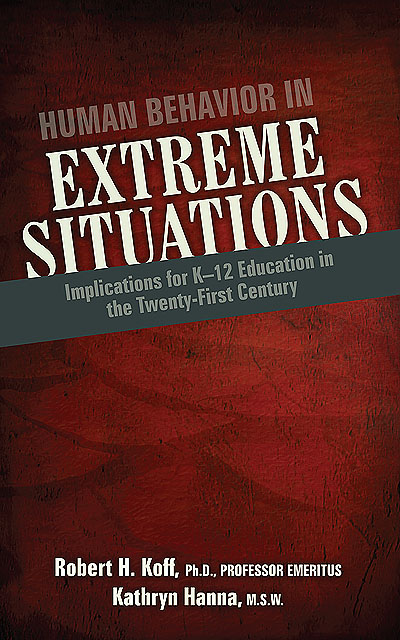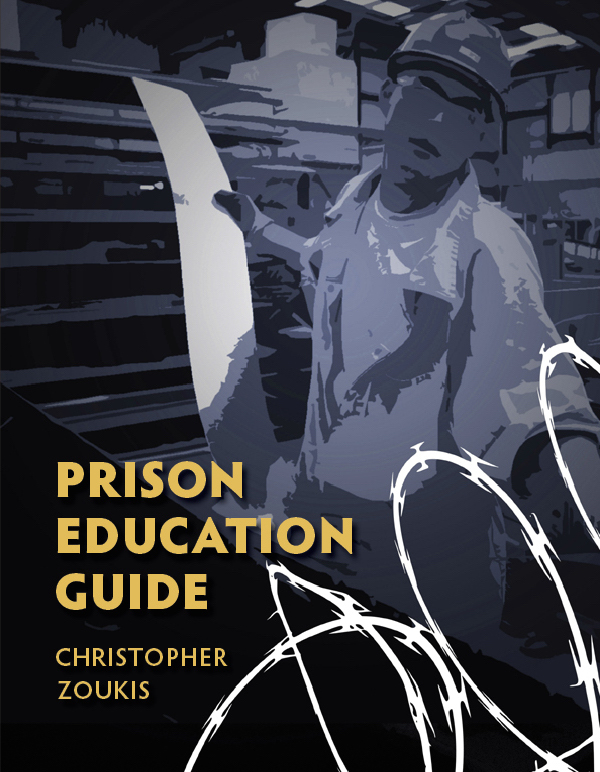You must be logged in to post a review.
Human Behavior in Extreme Situations: Implications for K-12 Education in the Twenty-First Century
Based on an undergraduate course by the same title created and taught by Professor Koff, the purpose of this book is to apply extreme situations of the past to public school settings. Koff states it precisely: “Our primary concern, however, is the protection of children who all too often are the innocent victims of extreme situations.” Koff and Hanna take a critical look at eight extreme group situations of the past and deduce the essential elements necessary for survival. While specifically designed for all involved in the public school environment, those who are “seeking to prepare themselves for extreme situations in other realms” can equally benefit from Koff and Hanna’s analysis.
Koff and Hanna describe extreme situations as “conditions (environmental or man-made) that force individuals and groups to rapidly adapt themselves, often involuntarily, to survive.” That said, the duo set to work to examine lesser-known, as well as familiar, past incidents. The list includes the 1976 Chowchilla school bus kidnapping (driver and 26 children), the 1914 Shackleton Voyage (crossing the Atlantic), 1943 Sobibor Death Camp (resistance movement), the 1943 Davao Penal Colony (POW escape), (2002-2004) the Abduction of Three Cleveland Women (rescued in 2013), the 1972 Buffalo Creek Disaster (town destruction from three dams), (1950-1953) Korean War brainwashing, and (1941-1945) the corruption of the medical profession in Nazi Germany.
Gleaning consistent patterns from the widely-varying circumstances, Koff and Hanna zero in on beneficial survival tools they believe can equip “those who serve on boards of education, superintendents, school administrators, and any other individuals with the responsibility of overseeing schools and ensuring the safety of the students who attend them” for unforeseen threats. Designed as recommendations, their compiled list is “meant to spark independent thought about how readers may apply the lessons learned from historical examples to their own schools” and “to cultivate in teachers and staff the kind of thinking that could potentially save lives.” A few recommended examples include the necessity of adaptability, leadership development, service learning, and emergency protocols.
While Koff and Hanna’s presentation is well-documented and their conclusions create sound and helpful advice, readers may find the inclusion of the Tamir Rice and Michael Brown tragedies a bit out of place, considering that the duo directs their research on extreme “group” situations. Although well meaning and sincere, those in the black community may take exception to statements, such as “Rice, for example, was shot after refusing to follow police officers instructions to put his hands up. The need for education on this and similar issues does not justify the actions of either party, but rather it is meant to point out the necessity of educating children on the potential consequences of their actions and how they can avoid negative outcomes.” With emphasis on “educating children,” the statement could easily be interpreted as police officers are always the good guys and the children are the ones always in need of correction.
In regards to Michael Brown, this statement stands out: “Although this was an extreme case, it nevertheless shows how important it can be for law enforcement officers to get to know the people they are serving. This can mean the difference between a community viewing police as protectors and allies, or enemies and outsiders.” The emphasis here is on “extreme case.” If one understands the depth of black-community-and-police-relationships history in this country, Brown’s situation is, sadly, more the norm than extreme.
Certainly, topics of hate and racism need to be included not as a recommendation, but as a “must” in developing stronger school and community ties.
In closing, Koff and Hanna include a glossary, as well as provide tables that concisely capture each incident and lessons learned (found in Appendix A). Appendix B includes exhaustive surveys for the purpose of assessing “the familiarity of students, teachers, administrators, parents, and emergency personnel with the schools emergency plan” and a Threat Assessment Team (TAT) guide that “provides steps for creating a plan to address an active shooter” (to review troubling student behavior so that such incidents might be prevented).
While Human Behavior in Extreme Situations has some flaws, it is, nonetheless, insightful, thought-provoking, encouraging, and headed in the right direction.
| Author | Robert H. Koff and Kathryn R. Hanna |
|---|---|
| Star Count | /5 |
| Format | Trade |
| Page Count | 126 pages |
| Publisher | Inkwater Press |
| Publish Date | 1-Sep-15 |
| ISBN | 9781629012766 |
| Bookshop.org | Buy this Book |
| Issue | December 2015 |
| Category | Reference |
| Share |






Reviews
There are no reviews yet.